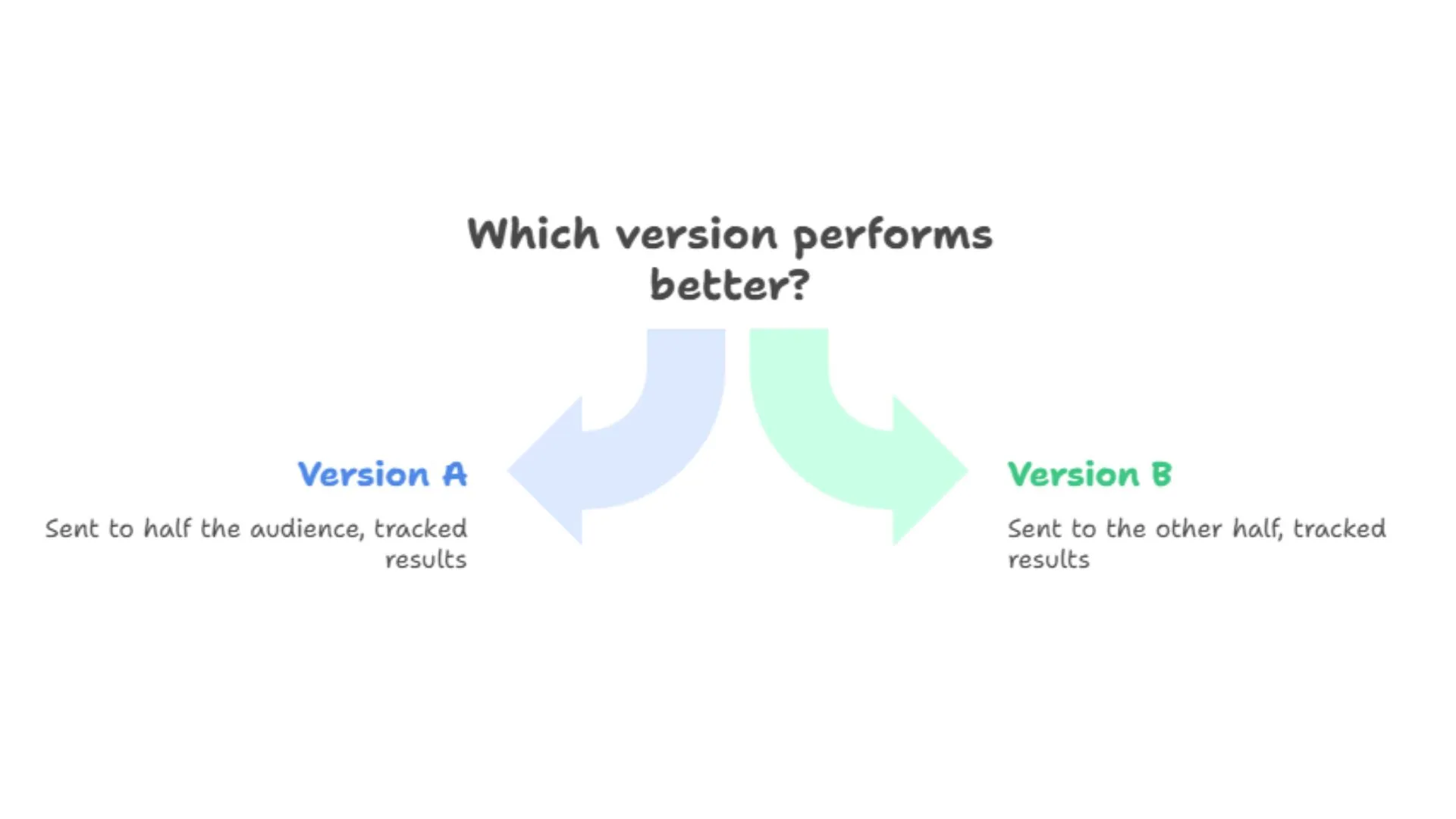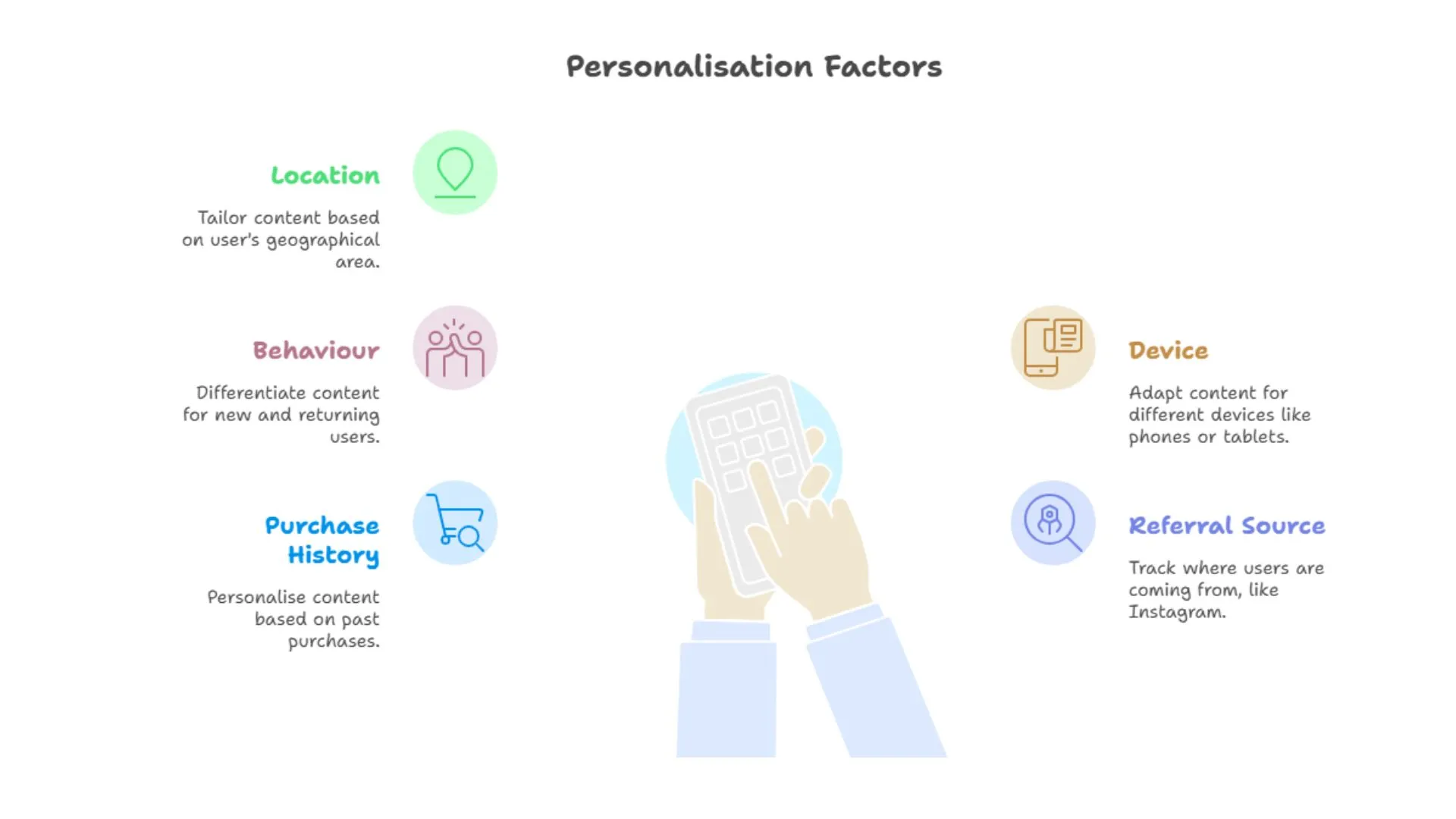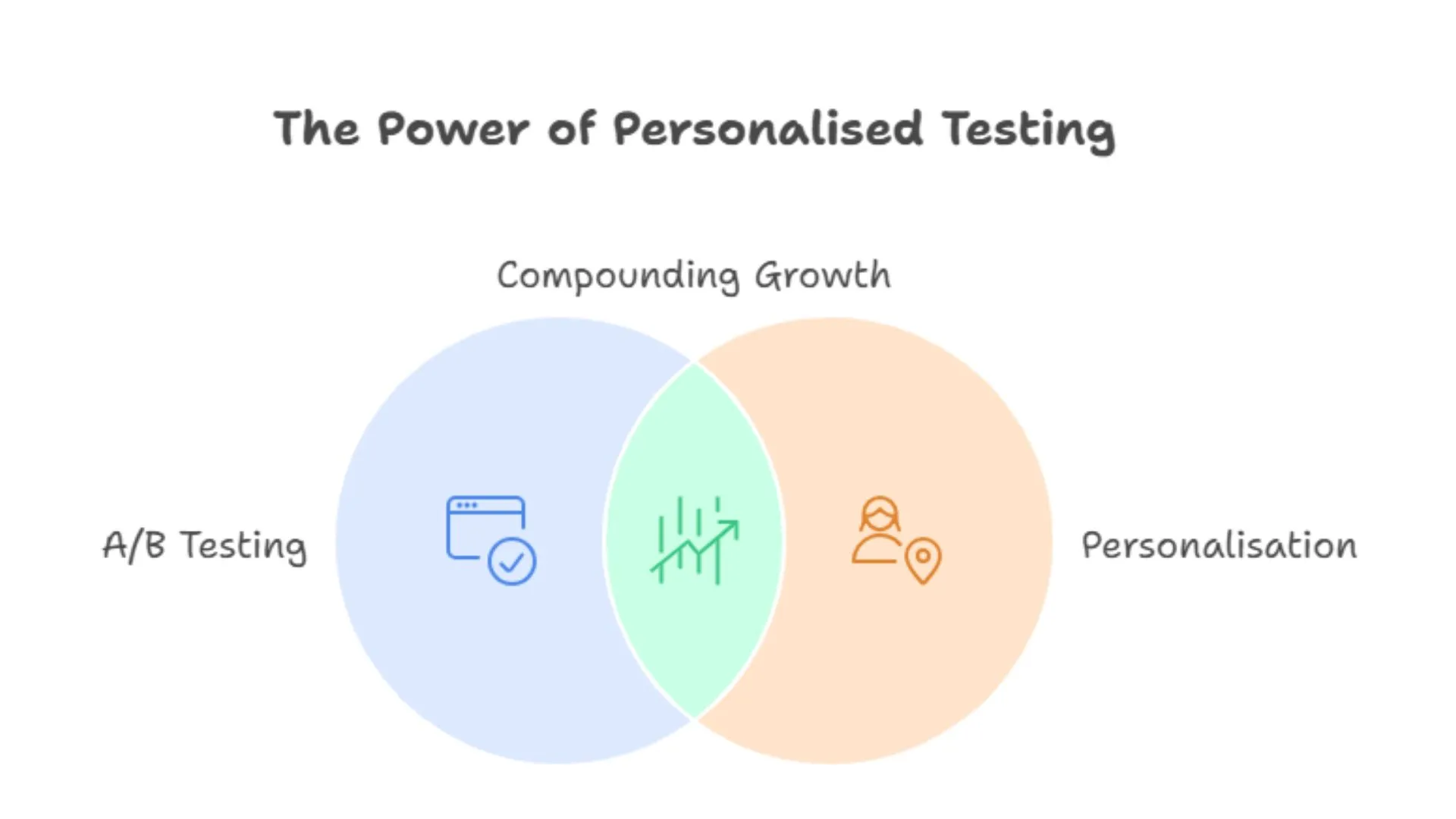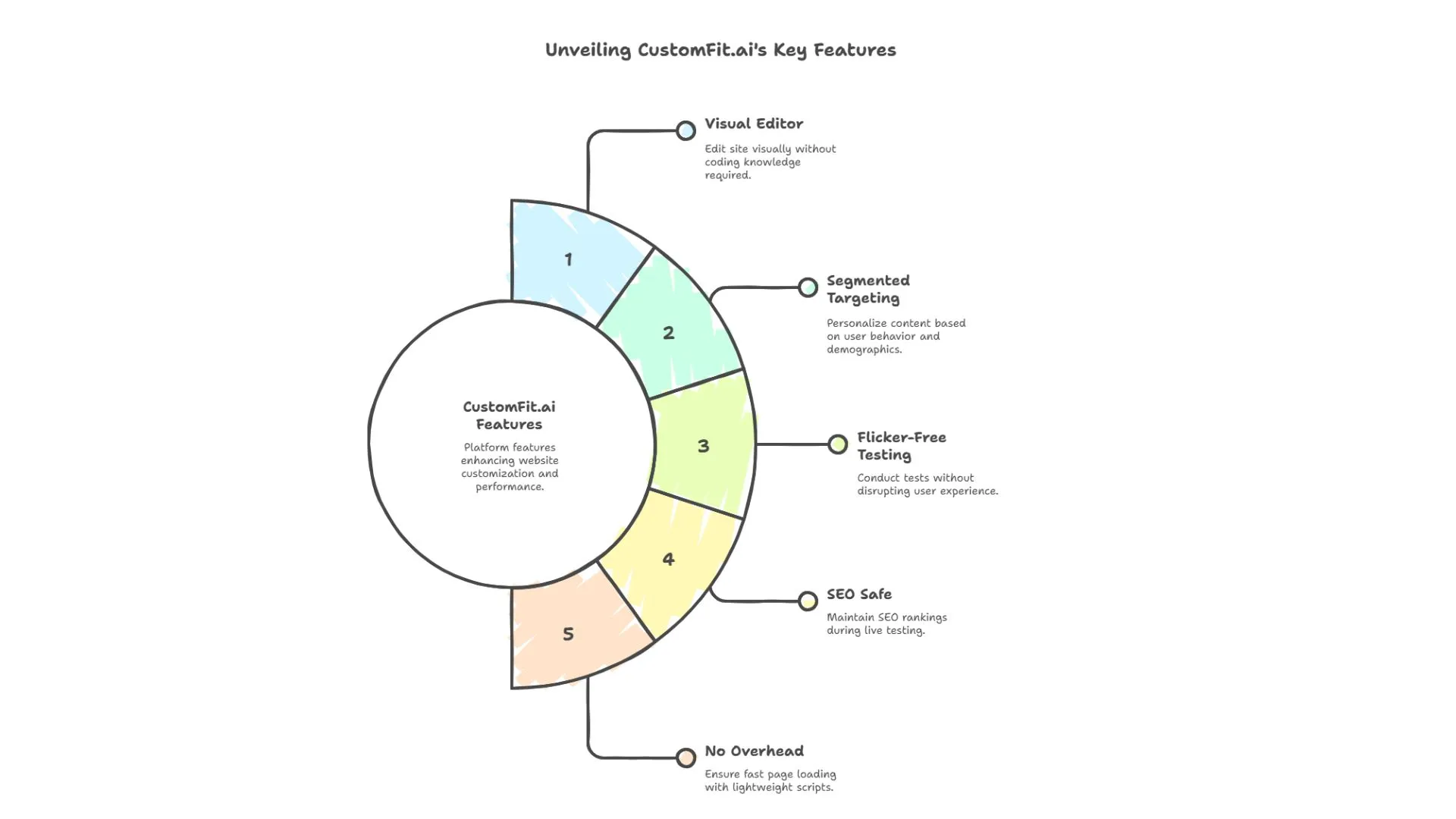Websites typically show all visitors the same pages, regardless of whether they're a first-time Instagram scroller or a repeat customer in for their fourth order. But visitors aren't alike. They don't desire the same. So why do we insist on repeatingly showing them the same pages?
If you've ever found yourself wondering how certain brands are able to make their sites feel smarter, more intuitive, and just. better, then you're not dreaming. They're likely using A/B testing and website personalization combined to create experiences that are actually representative of the way people surf and shop.
In this guide, we'll take you through what A/B testing is, why website personalization is more than a "nice to have," and how tools like CustomFit.ai enable you to make both happen, without having a developer on hand.
A/B testing is just this:
You've got two versions of something, a headline, a button, a layout, and you try them both to see which one does better.
Version A is sent to half of your audience. Version B to the other half. You track results. The winner becomes your new default. Rinse and repeat.

It sounds basic, and in theory, it is, but the implications are powerful. With A/B testing, you’re replacing assumptions with data. You’re no longer arguing in meetings about whether “Buy Now” or “Shop Now” is better. You just test it and see.
Done correctly, A/B testing enables you to:
Whether you're operating a Shopify store or a B2B SaaS website, the appropriate A/B Testing Platform will enable you to test and learn, without technical hurdles.
While A/B testing is concerned with optimizing what, personalization is concerned with optimizing who.
Website personalization is displaying varying users varying experiences depending on who they are, where they've come from, or how they've engaged with your site.
Example:
Done well, personalization doesn't feel creepy, just natural. It uses what you already know about a user to assist them in finding what they are looking for, quicker.
With CustomFit.ai and other tools, you can personalise on:
And more

But used together with A/B testing, personalization is a learning loop. You're not simply swapping pages, you're adapting them in real-time, driven by context.
Many teams treat these as two different paths:
However, in reality, they're a perfect pair.
Suppose you perform an A/B test on a product page. You find out that emphasizing shipping information increases conversions. Wonderful.
Now take it one step further: Show quicker shipping to metro city users. Or show a different urgency message to mobile users.
That's personalization on top of testing, and it's where the compounding effect really starts to happen.

Let's make it more real.
Test:
"Flat 20% off" headline vs. "Limited Time Offer"
Personalise:
Display alternate offers by traffic source (e.g., ad click vs. email click)
Test:
Form with 6 fields vs. form with 3 fields
Personalise:
Display logged-in users a pre-populated form or skip part of the questions
Test:
Emphasize monthly vs. annual pricing
Personalise:
Show currency based on region or default to the best-selling plan in their category
Test:
CTA at article top vs. bottom
Personalise:
Display alternative CTAs depending on whether the visitor is a new subscriber or subscriber
This is where most brands falter: they know what to personalize and what to test, but they don't know how to do it without summoning the dev team.
That's where tools like CustomFit.ai fit in.
Here’s what makes it stand out:

It's the type of tool that allows growth teams to test, learn, and adapt without waiting on weekly sprints.
You don’t need to start big. It’s better if you don’t.
Here’s a simple plan:
Maybe it’s your product page. Or your lead gen form. Or your homepage hero.
Change one thing. A headline, a CTA button, a value prop.
What do you want more of? Clicks? Signups? Purchases?
Use an A/B Testing Platform like CustomFit.ai to split traffic.
Let the test run long enough (typically 1–2 weeks, or until you reach statistical confidence).
Update the live page with the winning variant.
Now that you know what works overall, try tailoring that experience to different user groups.
Rinse. Repeat.
This comes up often, and it’s a fair question.
Search engines like Google are totally fine with AB testing for SEO, provided you don’t try to manipulate results.
Here’s how to stay safe:
Most modern A/B Testing Platforms (like CustomFit.ai) handle this well and are built with SEO in mind.
Bonus: When your landing pages perform better, your SEO metrics often improve too (think bounce rate, time on page, conversion signals).
A/B testing and website personalization aren’t just for massive teams or technical power users anymore.
They’re for anyone who wants their website to be less of a billboard, and more of a conversation.
You don’t need 100 tests or 50 segments. You just need to start.
Start with one change. One insight. One small win.

And when you’re ready to scale that learning across users, segments, and goals, platforms like CustomFit.ai give you the space to experiment without the chaos.
Testing helps you learn what works. Personalization helps you deliver it to the right people. Put together, they help your site feel smarter and sell better.
A: A/B testing compares two versions of a webpage or element to see which one performs better based on user behavior. It’s used to improve conversion rates and user experience.
A: That depends on your needs. For no-code editing, fast deployment, and easy personalization, CustomFit.ai is a strong choice. Other options include Optimizely, VWO, and Adobe Target.
A: Personalization shows users what’s most relevant to them, based on their location, device, behaviour, or history, leading to better engagement and higher conversion rates.
A: Yes, as long as you avoid cloaking and follow best practices. Most A/B testing platforms, including CustomFit.ai, are built to be SEO-compliant.
A: Absolutely. Test first to learn what works overall. Then use personalization to deliver that winning experience to specific user segments more effectively.